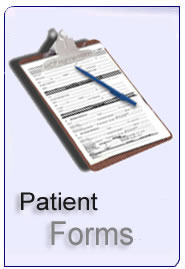by Edward Leigh, MA
A patient tells you they understand everything you said about their treatment plan. You feel good about this patient visit and are ready to close the meeting. The patient stated they understood, but did they really?
Problem with “Do you understand?” question
There are serious issues associated with the question, “Do you understand?” Just because the patient says, “Yes,” does not mean they truly understand. How can you be sure they understand? Use the powerful “teach back” method.
Teach back is a powerful communication tool to assess a patient’s understanding. After the professional shares new medical information with the patient, the patient is asked to “teach back” what they just heard, verbally or in the form of a demonstration. This allows the professional to correct misunderstandings and provide additional information, if necessary. (In some cases, the patient’s caregiver may be the person “teaching back” the information.)
Factors to consider
If the teach back strategy is not properly set up it could actually backfire leading to a worse patient experience.
Patients may feel you are questioning their intellectual abilities. I have interviewed thousands of patients regarding their experiences with healthcare professionals. For example, I asked one patient if she was familiar with teach back. She stated she was not familiar with the strategy. She also asked, “Is that for people with learning disabilities?” Upon further discussion, she said if a healthcare professional asked her to repeat back what she heard, she would feel that they think of her as dumb. This example illustrates that the set up to the discussion is critical. It is vital that patients know the strategy is useful for everyone.
This strategy is not a like a pop quiz you had in school. Don’t simply tell a patient, “Repeat back what I just said!” This comment will put them on the spot and cause anxiety. They will feel like a school kid who was just told to clear their desk for an unannounced pop quiz.
To avoid these potential issues, ask the patient certain types of questions. View sample questions in the next section.
Sample of open-ended questions to assess understanding
There are many ways to assess patient understanding via teach back. The questions below provide a friendly and comfortable manner to assess understanding.
Focus on “I” Language. It is important to remember teach back is a way to test our abilities at explaining. In other words, we are actually testing ourselves, not the patients. Using “I” language takes the stress off the patient.
- “I want to be sure I explained everything clearly. Can you explain it back to me so I can be sure I did?”
- “Please show me how you will use the device, so I can be sure I have given you clear instructions.”
Focus on how they would tell other people in their lives.
- “How would you describe your health condition to a friend?”
- “When you get home and your spouse asks about your treatment plan – what will say?”
Possible reasons for patients not being able to teach back
If the patient is not able to repeat back their medical situation this may be an indication the professional needs to rework their teaching approaches. There could be several factors reducing the ability of a patient to teach back.
Excessive use of medical jargon. If patients do not understand what professionals are saying, they will not be able to repeat back what was said to them. Use everyday language. For example, do not say, “NPO after midnight.” Rather, state, “Do not eat or drink anything after midnight.”
Too much information presented too quickly. The “chunk & check” strategy is a tool to avoid this scenario. Provide a “chunk” of information and then “check” with the patient for understanding.
Patient anxiety. Regardless of how skilled the professional is at explaining to the patient their medical situation, if the patient is very tense, the material will not be absorbed. In this case, use empathy. Mention that you understand their feelings of anxiety. You may want to engage in brief deep breathing exercises with the patient to help them feel calmer so they are better able to take in the information. The exhale should be longer to achieve maximum relaxation. For example, inhale on a count of four and exhale on a count of six. A few deep breathes goes a long way!
If the patient was not able to repeat back, do not repeat – re-phrase.
Benefits of teach back
Improves outcomes. According to the Joint Commission, research indicates that the teach back technique is effective, not just for improving patients’ understanding, but also for improving outcomes. For example, patients with diabetes whose physicians assess their comprehension and recall with the teach back technique have significantly better diabetes control than patients whose physicians do not use the technique. (Schillinger D, et al. Closing the loop: physician communication with diabetic patients who have low health literacy. Arch Intern Med. 2003;163:83-90.)
Can ultimately save time. Professionals often feel they have no time for the teach back method. It actually does not take very long to assess a patient’s understanding. Think of how much time it will take if the patient has to call back or visit again.
Enhances patient safety. If a patient does not understand their medical issue, they are at risk. A patient’s medical situation is not nice-to-know information, it is need-to-know information!
Unity Point Health, Des Moines University and other organizations collaborated to develop an excellent Teach Back Toolkit. Click on the link for more information on this very helpful toolkit.
http://www.teachbacktraining.org/
After giving it – be sure they get it!
**************
Edward Leigh, MA, is the Founder and Director of the Center for Healthcare Communication. The Center focuses on increasing patient satisfaction, improving compliance and decreasing the risk of medical errors. The Center offers high-impact training, consulting and one-on-one coaching. Edward Leigh’s new book, Engaging Your Patients, is due out in late 2014. http://www.CommunicatingWithPatients.com or 1-800-677-3256






